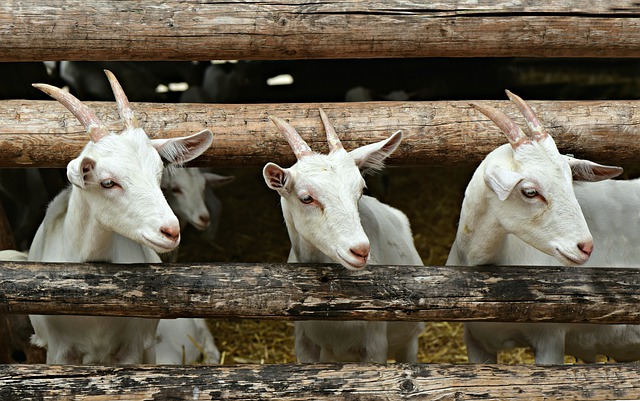In many countries across the world, including the United States, it is recommended that both babies and toddlers consume cow’s milk on a daily basis as it is rich in healthy fats, vitamin D, and calcium. However, more and more parents are seeking out alternatives to give to their children, and one of the most popular alternatives that they are turning to is goat’s milk, such as Kendamil European baby formula; Kendamil Goat Stage 2. In many countries it is the preferred milk to use after a baby has moved on from breast milk. The reason for this is that it is much easier for them to digest than what cow’s milk is and it has fewer allergenic compounds in it.
The benefits of goat’s milk
There are numerous different benefits to feeding goat’s milk to babies or toddlers and some of the best ones are listed below:
- Less allergenic – there are only trace amounts of alpha S1casetin found in goat’s milk. This is an allergenic protein that is in cow’s milk in great abundance. This means that if a baby or toddler has not been able to stomach cow’s milk, then they are probably fine to consume goat’s milk as an alternative. However, that is not to say that goat’s milk is completely free from allergens as it does actually contain a protein called beta lactoglobulin that is also present in cow’s milk as well.
- Easier to digest – when milk (any types) is drunk by a baby or toddler, the protein in it clumps together (or curds) within their stomach. This is caused by the acid that is inside of the stomach and how it reacts with the protein in milk. The smaller and softer that these clumps are, the easier they are to be digested and so will pass through the stomach very easily. The clumps formed with goat’s milk are particularly small and super soft, thus making them easy to digest and less likely to cause digestion problems. This can be beneficial for those children that suffer with gastroesophageal reflux (GER).
- More fats that can be digested – the process of digesting fat in milk very much comes down to the type of fatty acid chains that are present within it. For example, the globules of fat that are found in goat’s milk are easy to digest due to the fact that they are made up of more medium and short chain fatty acids. Cow’s milk has longer fatty acid chains in it, which means that your baby’s or toddler’s digestive system needs to do much more work in order to break it down. This makes the process if it passing through the digestive system so much longer in comparison with goat’s milk.
- Less lactose – both goat’s milk and cow’s milk contain some amount of the sugar known as lactose, although goat’s milk does have slightly less of it in. This makes it advantageous for those babies and toddlers that are lactose intolerant to drink goat’s milk instead of cow’s milk. However, those with a severe intolerance should still avoid drinking goat’s milk as it does have some in.
Drinking goat’s milk formula
Whilst breast is of course always the best option to go for when it comes to feeding your baby, goat’s milk is the next best alternative when breast milk is no longer available to them. It suits both babies and toddlers much better than what cow’s milk does.
Those babies that are allergic to other types of milk, such as cow’s, soy, or even hypoallergenic ones are often prescribed goat’s milk by medical professionals due to it being easy for them to digest and having very few allergenics.
What to know before introducing goat’s milk
There are a number of things that parents need to consider before introducing goat’s milk to their baby or toddler. These are listed below:
- The age of your child – it is not recommended to give goat’s milk (or cow’s milk) to a baby that is under the age of one year old. This is because it can irritate the intestines and even cause anaemia.
- The level of folic acid – the make up of the various nutrients that are inside of goat’s milk and cow’s milk are completely different from one another. For instance, goat’s milk has fewer than 10 percent the level of folic acid than what cow’s milk does. This means that your baby or toddler would require some sort of folic acid supplement in order to remain fit and healthy.
- What, if any, allergies you child has – if your baby or toddler develops an intolerance to or becomes allergic to goat’s milk, then the signs of this will appear almost immediately. However, the exact signs and symptoms can vary somewhat from child to child. Some of the most common symptoms though are vomiting, swelling, sneezing, runny nose, and wheezing. They may also even develop some sort of skin irritation, such as eczema. Some of the more serious signs that your child has an issue with drinking goat’s milk are colic, cramps, watery eyes, itchy rashes, nasal congestion, coughing, diarrhoea, and asthma. If your child develops any of these symptoms, then you should stop giving them goat’s milk and see if they start to go away. However, if you believe the consequences to be life threatening, then you should take them to get medical assistance immediately.
The level of vitamins and minerals – although the level of minerals and vitamins in goat’s milk and cow’s milk are pretty similar, it is important to be aware that goat’s milk has more antioxidants (selenium), copper, niacin, potassium, vitamin A, vitamin B6, and calcium than cow’s milk. However, in cow’s milk, there is more vitamin B12 and a lot more folic acid. Goat’s milk actually has very little folic acid in it which is why it is recommended that your child is given a folic acid supplement to make up for this when drinking goat’s milk.







Recent Comments